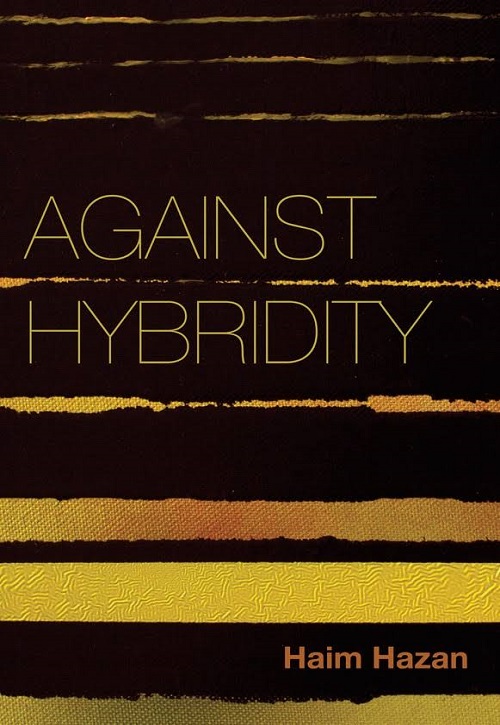– Zygmunt Bauman, Professor Emeritus of Sociology at the University of Leeds
– Nigel Rapport, University of St Andrews
Translated from…

This book is a Korean translation of the book titled Against Hybridity: Social Impasses in a Globalizing Worlde by Haim Hazan(Cambridge: Polity, 2015)
Non-Hybrids Concealed in the Age of Hybrids
This book features the author’s original and outstanding insight into an innovative critique of modern western culture. One of the major characteristics of contemporary culture is a positive and banal view of the transgression and disruption of cultural boundaries. The postmodern world welcomes a stranger or immigrant as a meaningful entity. However, there is a price for the hybrids characterized as negligence and rejection or silence about the non-hybrids. This book offers a sociological and anthropological investigation of the non-hybrid entities that we, or western culture has either recognized as non-hybrids or rendered rejectable, ignorable, and manageable
The Second, Third Age? The Grade of the People in the Old Ages
This book aims to perceive the social impasses brought about by the apotheosization of overwhelming force of globalization. That is to say: updating the outmoded ideology called the notion of otherness as a new form of anthropology; rethinking fear and anxiety in the high era of hybrids; and above all, understanding the current impasses based on the study of old age still at margin. This book can be identified as an evidently academic property yielded by Hazan’s past few decade-long endeavors to explore and work on the notion of aging.
The prime example of non-hybrids this book presents is the old ages. Hazan describes how the old ages have been graded and staged, in our (westernized) culture, into the Second and Third age. TV commercials advertise that a new science and technology can not only slow down, but also cure the aging process as much as we can. Thereby, the aging is concealed as it is considered un-transformable and non-marketable.
Pain, Autism…The Unwelcomed Non-Hybrids
Twenty years of critical social theory have evidently taught us to be suspicious of any certainty about “the postmodern” itself. Hazan’s book, however, constantly utilizes this as an indispensable construction for the cultural analysis at stake. All the postcolonial natives, immigrants, and nomads are welcome and encouraged to hybridize and assimilate into Western, postmodern, midlife, and neurotypical culture. In such a culture, perceived non-hybrid elements of social impasses, entities of indestructible essence will be denied, ignored, or exterminated from cultural discourse since they are seen as disturbing the continuous flow of “liquid modernity” and consumerist culture.
The Sensibility and Fixations of Postmodern Culture Consisting of Non-Hybrids
The main narrative is that of aging and the Fourth Age, with subplots including as pain, the Holocaust, autism, fundamentalism, and death. This book highlights a common biopolitical denominator explaining these various cases and their social positioning. In other words, the argument is that the social perception of non-hybrids results in aversion, distancing, and rejection, while the residual layers of these “non-hybrids” are staged and graded to create a dynamic spectrum on which hybridization can still take place.
The author is not arguing for the actual existence of non-hybrid essences, such as in the form of old age, pain, or autism. Hazan simply argues that a non-hybrid is constructed, in contemporary postmodern western, midlife, neurotypical culture, as being non-hybrid. The aim of this book is to examine how, due to the sensibility and fixations of the so-called “postmodern” culture we live in, those elements considered as “non-hybrids” become the targets of specific social strategies designed to distance, reject, stage, and (de)grade.


